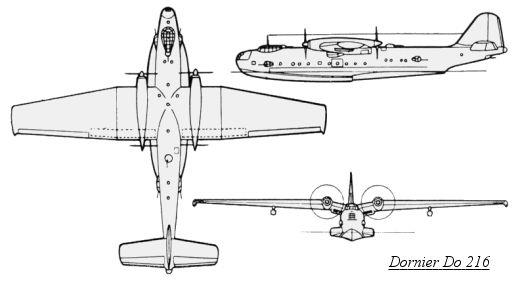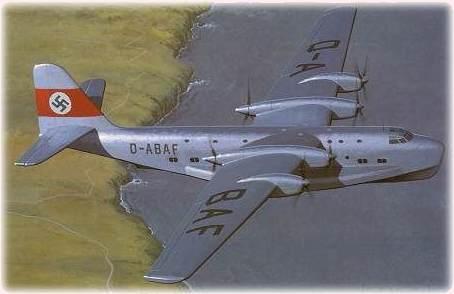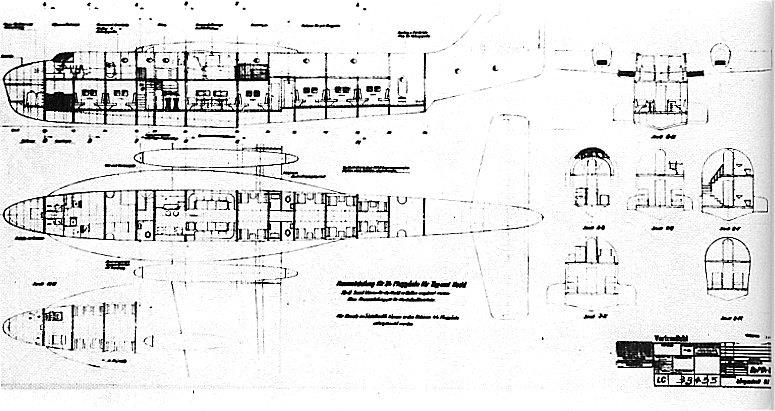| Type |
Passenger carrying ( 6 + 24/44 passengers) or Long distance reconnaissance flying boat |
| Engine |
6 DB 603c or Junkers Jumo 223 |
| Dimensions |
Length 42.00 m, height 7,9 m, span 48.00 m, wing area 310 m2 |
| Weights |
Empty 40000 kg, max. flying weight 71300 kg, fuel (Civil) 36500 l, (Military) 39000 l |
| Performance |
Max. speed 445 km/h, service ceiling 7500 m, range 4100 km |
| Armament |
Reconnaissance 5 × MG 151Z, 1 × Drilling MG 131 |


Dornier P.174/Do 216 (Luft 46)
Dornier developed this flying boat project after their Do P.192/ Do 214 project was cancelled by the RLM in June 1943. It started its design life under the designation P.174/I, but was given the Do 216 number by the RLM later. Intended for an anti-shipping role, the 216 could be fitted out for other purposes also.
Basically, the Do 216 was similar to the Do 214, but had only a single interior deck inside the fuselage instead of the two found on the Do 214. The wing planform was also similar, with a tapered leading edge and a straight trailing edge. Four Jumo 223 24-cylinder diesel engines (2500 horsepower each) were the proposed powerplants; two engines each were located in a wing nacelle blended into the wing, one pulling and one pushing. The Do 216 was manned by a crew of ten, and there were to be seven remote-controlled gun stations located at various place along the fuselage. Offensively, the 216 could carry up to a 5000 kg (11020 lbs) weapons load, which included various guided weapons mounted in underwing racks.
Other versions of the P.174 were designed, with the same basic dimensions, only to be powered by six Daimler Benz DB 603C 12-cylinder, liquid-cooled, inverted V engines (1750 horsepower each). This flying boat project was also cancelled by the RLM, the reason given was that there was no need for a seaplane of this type.

The Dornier Do 216 was a large military flying boat projected by the Dornier works. The aircraft was designed when work on the civilian Dornier Do 214 had to be stopped. The Do 216 was a military development of the Do 214. The aircraft had the same structure as the Do 214, but was smaller and was to be powered by only four Junkers Jumo 222s, each with 2500 hp, or as an alternative by six Daimler-Benz DB 603s, each with 1750 hp are driven. These were to act on each wing on one pull and one push propeller (Junkers) or on two pull and one push propeller (Daimler-Benz). The fuselage should only be one-story and provided with glazed defenses. The crew should consist of ten men. Of these, seven men were provided for the three rear, two upper and two front defenses.
The Reich Aviation Ministry rejected the draft due to a lack of demand.


